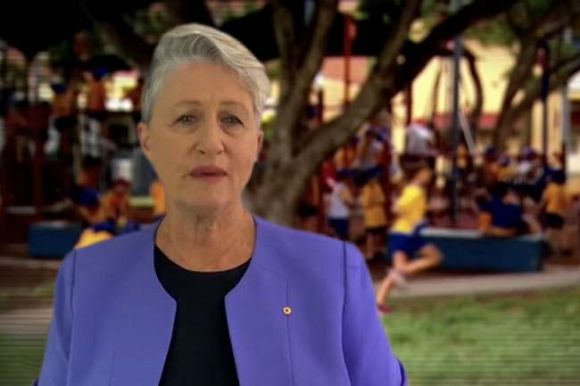Prime Minister Morrison wants to send children back to school despite evidence he is unsure of doing so, writes Natalie Beak.
MY CHILD is seven years old. His first weeks at school as a kindergartner were a mix of confusing, exciting and challenging new experiences. This was all cut short by a statewide lockdown in the fifth week of Quarter 1 2020.
Since then, my son has graduated from first grade amid further disruption to schooling, including more lockdowns and then incursions of COVID-19 as schools reopened and cases spread through classrooms. during Term 4 of 2021. He is about to start his third year of studies, at the height of the Australian Omicron wave, with 100,000 daily national cases, yet our Prime Minister has announced unequivocally that schools should stay open and the show must go on.
In an open letter to the Australian government published in the Sydney Morning Herald, a group of professionals whose ideas align with the Great Barrington Declaration, have stopped:
“We now have evidence that it is safe to allow schools to open for face-to-face learning.”
As a parent, I want to see this proof. As a founding member of COVID Safe Schools, the evidence we have seen strongly indicates otherwise. Our association – a group of parents, teachers and concerned community members – tracking school closures across NSW during the fourth quarter. We found that schools experienced over 1,000 incursions of COVID-19 during the fourth quarter, with the highest number of incursions reported in weeks 9-11 when close contact changes isolation rules were announced, a move that is supposed to reduce disruption.
December NSW Health Watch Report lists schools and daycares as high-risk environments, with the alarming graph below showing that schools had the highest number of infectious cases present for each week of the school term.

The evidence clearly shows that schools are not safe. But they can be. We know that the best place for most children to learn is in the classroom. That’s why it’s so important to make sure schools can open and stay open safely.
Experts from around the world, including the World Health Organization, tell us that monitoring ventilation and air quality is crucial to reducing the risk of airborne spread. CO2 The monitors are accessible, easy to use, and require no infrastructure support for installation or operation. Every classroom across Australia needs a CO2 monitor to ensure air levels are kept below 800ppm, just like classrooms across Europe, Canada, New York and the UK. HEPA filtration must be provided to support air quality when safe levels of CO2 cannot be maintained.
Mask mandates must be enacted and every child and teacher must be provided with a high-quality mask. the NSW DoEThe inability to establish a mask mandate meant that my child was only one of two kids in his class to wear a mask in term 4. For him, that meant helping to protect his best friend and mask buddy. , who has an immunocompromised brother.

My seven-year-old understands the importance of personal responsibility, but he also has the right under WHS law receive an education in a safe workplace and be protected from contracting a new virus with a range of potential long-term health impacts.
Children are the ‘lost voices’ of this pandemic – they were the last to have access to vaccination and had no choice but to follow government guidelines and directives to ensure access to education . COVID Safe Schools strongly believes in the right to choose whether to return to face-to-face learning or to receive remote learning support.
Despite what the authors of SMH According to an opinion piece, there is no evidence of long-lasting negative mental health effects of remote learning. In fact, distance learning is a long-established and well-understood way of delivering education, through distance education and home learning programs for children across Australia.
What we do know is that students in NSW performed above the national average in this year’s NAPLAN, despite the many disturbances. We also know that medical trauma has significant effects on children’s mental health and that there is real fear among children about bringing COVID-19 home to vulnerable family members.

The authors of the SMH the opinion piece also states:
“Our Australian data confirms that COVID-19 is a mild disease in children.’
While this is the case for many children, we also know that 1 to 2 children in 100 will be hospitalized, one in 1,000 will be admitted to intensive care and one in 3,000 will develop the severe inflammatory disease PIMS-TS. These are no small numbers given that our political leaders have repeatedly said that widespread COVID-19 infections are inevitable.
A postponement of the start of the school year to give children time to access two doses of a COVID-19 vaccine is a common sense measure already taken by SA and Queensland. In fact, rural areas have delayed the start of the year due to hot weather and I’m sure parents in Sydney would fondly remember an extension of their summer school holidays in 2000 to give them more time to experience the excitement of the Olympic Games.
Children have a fundamental right to quality education, health and well-being. These two freedoms are not mutually exclusive and can be achieved with proactive mitigation measures – the same measures already offered our politicians. I know for my child going to school is important, but not if it means bringing home COVID-19 with his half-eaten sandwich.
Natalie Beak is the Acting Vice President of COVID Safe Schools and parent of two young children.
Related Articles
Support independent journalism Subscribe to IA.



